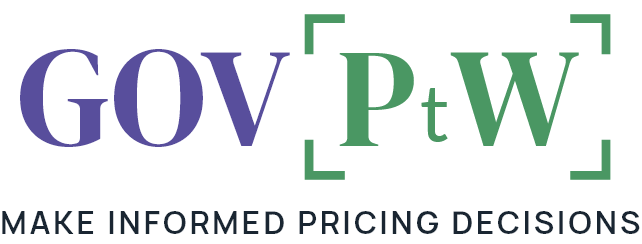Your Bid
When it comes to your submission there are some basic levers you have available which are ranked below in ascending order of their difficulty to change in the short run:
- Fee or Profit – This is what you slap on at the end of the cost build up. This can be adjusted at any time during the bid up until the very end. For Government contractors this is surprisingly not always as important as one might think so long as it is stays positive. Sometimes the contribution to indirect costs is equally, if not more important, which can result in some companies bidding aggressive fee/profit amounts to retain or capture business.
- Direct Costs of Goods sold. This is broken out in the Type and Quantity:
- Type – This can come from goods, services (e.g. direct labor costs), technology (e.g. licensing), subcontractors, etc. These are harder to adjust than fee/profit, but with enough planning they can be flexible. For example, let us say you wrote a technical solution that touts the qualifications and training of a Journeyman Help Desk workforce of 50 people. Hopefully you already did the homework to understand what their direct labor (salary) costs will be. Cutting salary at the later stages in the proposal to save on price may cause a concerning disconnection between price and technical that increases your risk rating and decreases your pWin.
- Quantity – How many people, hours, items, licenses, does your solution require. Will people be working overtime, normal hours, or will you have some part time staff? This requires an entire other article to go through the benefits of thinking through a Work Breakdown Structure (WBS).
- Wrap Rate – This represents all your indirect costs such as fringe benefits (paid time off, healthcare, etc), overhead, general and administrative, and material handling (if applicable). For each $1 of direct labor or product cost, how much does it cost the company. If your wrap rate is 1.4 then the answer is $1.40. A competition which is very price sensitive where competitors are all in the 1.5 wrap rate area is going to be very hard, if not impossible, to compete with if your company has a say a 2.0 wrap rate. Even if you were to win by slashing profit/fee and salaries, you are just creating problems in execution through higher turnover and hurting your brand through client dissatisfaction. In a survey put out by Grant Thornton, they found the following statistics about wrap rates:
| Location | Minimum | Average | Maximum |
| Corporate | 1.47 | 2.1 | 3.0 |
| Client | 1.4 | 1.9 | 2.3 |
The Outcome
Regardless of whether you win or lose, requesting a debrief from the Government is a must. In a loss the Government should provide you with a comparison of you versus the winning bidder. In a win you should be able to see how the Government evaluated your winning proposal. If you thought your proposal was Excellent but the Government rated it Good then that is important information to roll into your internal PTW process and address in your proposal writing process.
